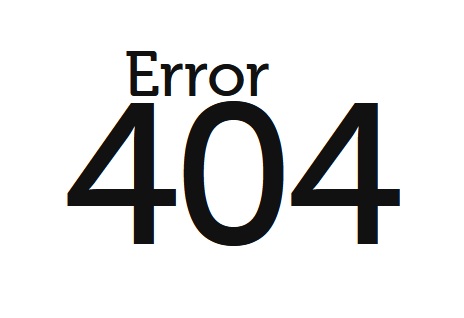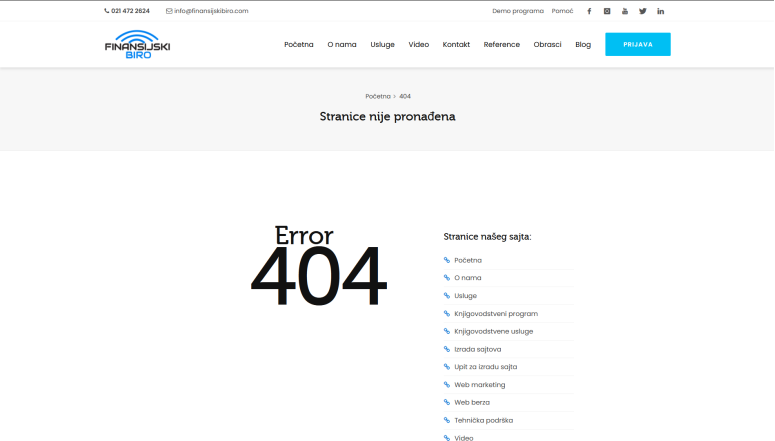What is Error 404?
- Blog
- What is Error 404?
What is Error 404 and how to use it?

You must have been in a situation where you were searching for something on Google, and when you clicked on the desired page, instead of getting the content you were looking for, an error occurred indicating that the requested page was not available. Something like "404 Not Found". Error 404 is a standardized HTTP status code. This message is sent from the server present on the network, the browser - browser that sent the HTTP request.
Here are a few reasons why Error 404 - Error 404 is the most common:
- The most common trigger for a 404 error message is when the content of a website is removed or moved to another URL.
- The URL you requested was misspelled.
- URL is incorrectly linked.
- The server responsible for the website has not started or the connection has been lost
Error 404 is actually an indicator of broken links that most often occur for the reasons we mentioned above.
Dead links often stay on the Internet for a long time because the people who maintain the sites usually have no idea that the linked content has been deleted or moved. Many sites still appear on search engine results pages (SERPs), although they are no longer available online (or at least not at the URL listed).
Other linked sites, such as blogs, news portals, etc., are often not notified that the page has been removed or can now be found under a new URL, so external links lose their functionality and become dead.
Error 404 can affect the reputation of your website as well as the search position
Search engines, such as Google, Bing, Baidu, etc. will have a negative impression of your website if it contains many 404 errors. Once crawlers find that your website displays many requests with 404 code, it is assumed that the site is not performing well.
Dead links affect a page's ranking, and Google may reduce its ranking in the SERP (search results) or even stop indexing (displaying) it if too many 404 pages of errors occur.This can significantly reduce the number of visitors to your website.
How to find links that lead to 404 errors?
There are a number of free tools available to help you find dead links more easily. Here are some of the most popular for you:
Why should you create your own 404 page on your website?
Having a standard 404 error page is better than not having one at all, although your own page is preferable for several reasons:
- You can create a specially designed page that contains links (i.e. links to your homepage or subpages where the content overlaps with what the visitor originally requested). By taking these additional steps, you may prevent visitors from leaving your website as soon as they see Error 404.
- Make sure that the design of the 404 page matches the style / layout of your site so that the user is not confused, but very easily understands where it is.
What a standard 404 page looks like:

What a 404 personalized page looks like - it's our website in Serbia

How do I force a 404 personalized page display in case of an error?
To perform the redirection, we will use the .htaccess file located in the public_html directory .
In one of the previous posts we wrote about what .htaccess is, so for those who do not know or have not read the post you can click on the following link:
When you find and open the file according to the instructions from the previous post, you need to enter the following code:

ErrorDocument 404 /404.shtml
After that, in the public_html directory, you need to "manually" create the file 404.shtml
Within the file, you can create a personalized page that will be displayed.
If you do not want to create a personalized error page, but want to redirect to the home page, simply copy the "source code" of your home page within the 404.shtml file or redirect via the .htaccess file.
Contact Us